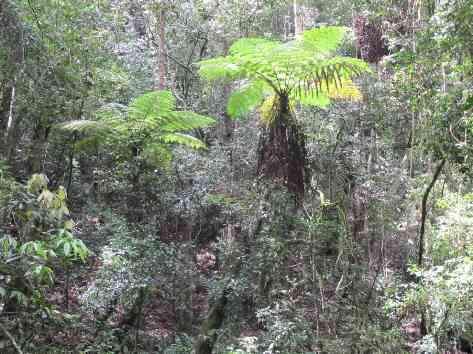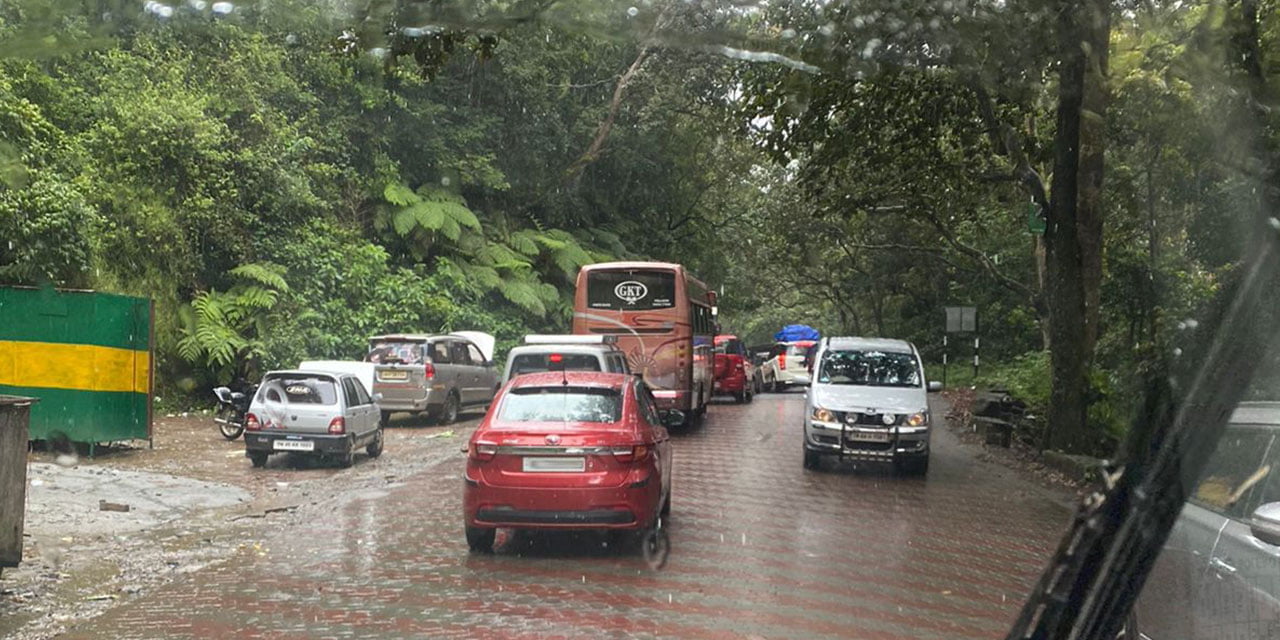Images courtesy Bob Stewart & Tanya Balcar
Our first visit to Blackburn Shola was in 1986. We took the path out of Prakasapuram that runs alongside the eastern flank of Blackburn marsh. The whole hillside above was one huge wattle plantation (Acacia mearnsii). Our guide, local resident Janet Rushforth, took us around the shola proper as our destination was the peak above the shola. Only when the track crossed the stream before ascending was there any hint of the magnificent shola that began there, upstream of our crossing. Bob experienced his first ever leech bite, the first of thousands to come. The peak was also covered in wattle.

The Old Shola
It was not until the mid 1990s that we discovered the shola proper as we jeeped around everywhere to maximize the number of shola species in cultivation, for the germination data published in The Flora of the Palni Hills (KM Matthew, 1999). Blackburn Shola had a number of species unique or nearly so, to itself.




The New Shola
From 1986 to 2000, we never followed the path through the wattle plantation above the marsh again. In March 2000, exactly 14 years ago, we visited Blackburn Shola with a group of people which included Navroz Mody of the Palni Hills Conservation Council (PHCC). We had climbed up through the shola to the peak we had visited (by another route) in 1986. To our surprise, the shola extended nearly all the way to the top, some 300 metres of elevation. We decided to descend taking a diagonal route towards Blackburn marsh, through the wattle plantation.
This was easier said than done; in June 1996, a fierce cyclone had hit Kodaikanal. It brought down millions of trees, mostly plantation species, and of them mostly wattle. Everywhere now, our way was blocked with fallen trees and we struggled to pick a way down. Struggle though it was, we were totally overjoyed to see tens of thousands of shola saplings coming up, of every conceivable species. We had been aware of sholas coming up in plantations, but we had never seen this in such a spectacular form.
In the 14 years since, we have shown dozens of people this remarkable phenomenon. No one has questioned the veracity of our observations here. Each year it gets a little harder to imagine that all this was once a wattle plantation.
Surviving wattle trees are very rare now, and those that have fallen are rotting away. The conversion to shola is strongest at the old shola margin, but now extends to about 1 kilometre out towards Prakasapuram.
This is the most advanced part of the new shola, very close to the old margin. Note the density of the vegetation compared to the old shola. The larger trees are very often Symplocos cochinchinensis.
One extra point to be made is about the lack of an eco-tone. The sholas of the Palni hills were all surrounded by plantations right up to their edge, destroying the sharp edge between shola and grassland many years ago.













We now find it very disconcerting that the few surviving wattles are thought by some to be a threat to the shola and are set to ‘invade’. Yesterday we saw not a single seedling of wattle in either the old or new shola, and never have; and we are totally confident we never will. It is with even greater consternation that the clamour for the eradication of the old plantations has taken on a legal form. This legal action threatens healthy ‘novel eco-systems’ being nurtured under pine, eucalyptus and alnus nepalensis as well as wattle.



We know what happens when plantations are cut. They renew themselves, along with tons of weeds. The process of naturalization is reversed and recovering hydrologies are again subjected to vigorous young plantation growth.
Why are people so anxious to be rid of plantations? We suspect they think the landscape will return to its original state. This is absolutely wrong. If people want to restore extirpated grassland they will have to bite on the bullet of pro-active restoration. This necessarily involves the raising of grassland species in nurseries, planting them, and actively repressing the re-invasion of the plantation species that have been cut along with the other weeds that will come up. This is not easy but nor is it impossible, as we have shown at Vattaparai grassland/marsh restoration since 2006. There still are plantations (far from a ‘mother’ shola) where the establishment and conversion to shola is at an early stage. The option of actively re-grassing these areas is there.


We have not been able to plant at Vattaparai for 18 months. We have thousands of grass plants waiting to be planted, and we have had excellent rain; now, early in the rainy season is a good time to plant. We urge our colleagues in the Forest Department to expedite the re-instatement of our permission to plant (and weed) at Vattaparai and plant shola saplings (and weeds) in the degraded Bombay Shola.

This article was originally written in 2014. It is published here with the permission of the Vattakanal Conservation Trust.











